How Emotional is Trump?

What if you could measure emotions? What would you do with that?
You absolutely can measure emotion using AI, or at least in a sense. I built emopoint, a tool for analyzing emotions in text. If you want to technical details, I wrote about it in part 1.
The short story: The AI model encodes everything it sees into it’s own “language” (all numbers, obviously), from which emopoint extracts just the emotion part so we can make cool graphs and charts.
Trump: Something everyone can disagree about
I need an example. I’m trying to see if AI really understands emotions. Who is the most known person that evokes the biggest emotional response? My first thought was Donald Trump (my brother said Taylor Swift, but that might be too controversial 🤣).
I downloaded all of Trump’s Truth Social posts from 2022 and plotted the emotional intensity. To get a feel for what that actually means, I compared it against the most boring Wikipedia articles I could find.
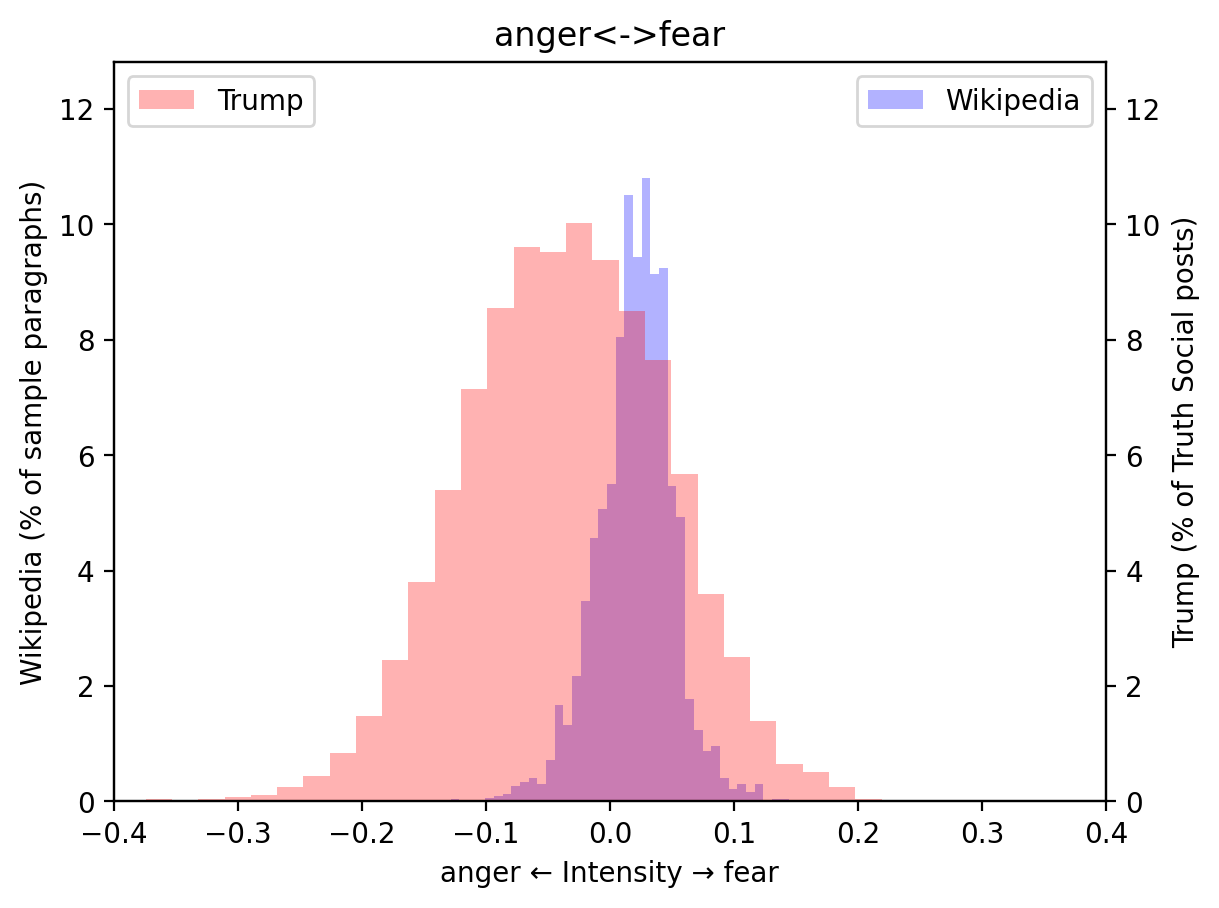
How to read this: The middle is the least emotional, the right and left extremes are most.
I see an obvious slant toward anger. The Wikipedia articles are a thin spike, and the bulk of Trump’s posts sit to the left (the anger side). That seems right to me; I do see a lot of angry content from him.
Are anger and fear opposites? That’s how I plotted them. In Plutchik’s wheel of emotions, he regards them as opposites because anger often leads to confrontation, while fear leads to avoidance. That makes a lot of sense to me, but there are other ways to plot these as well.
Here’s the same graph, but for joy vs sadness, and disgust vs surprise (categories from Eckman’s primary emotions):
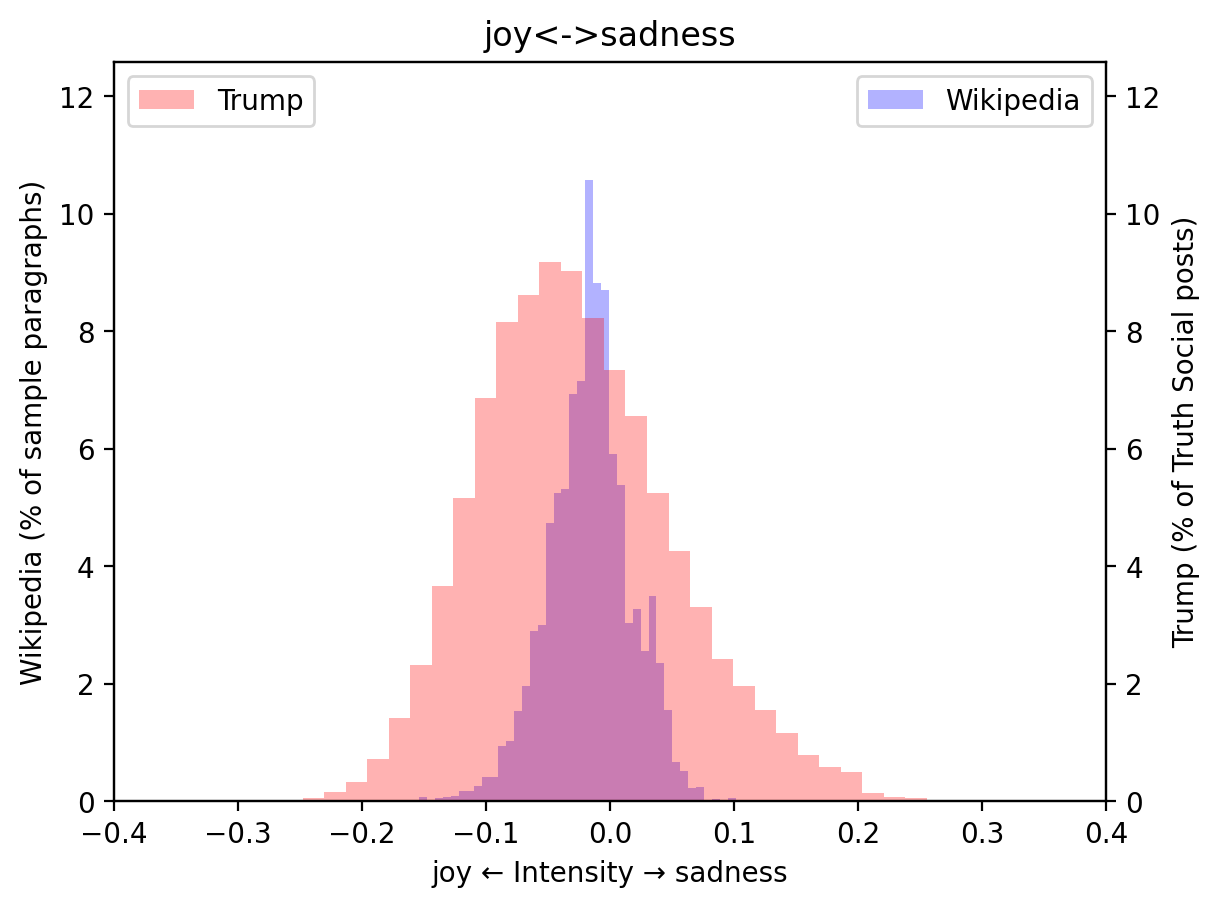
It’s a smooth curve, but leans toward the joy side. That means he frequently uses joy, and less often sadness. I found this surprising, I didn’t realize how often he uses joy. However, looking through his posts, I see it strongly on display. In hindsight, I don’t know why that’s surprising. You can’t build a movement using no positive emotions at all.
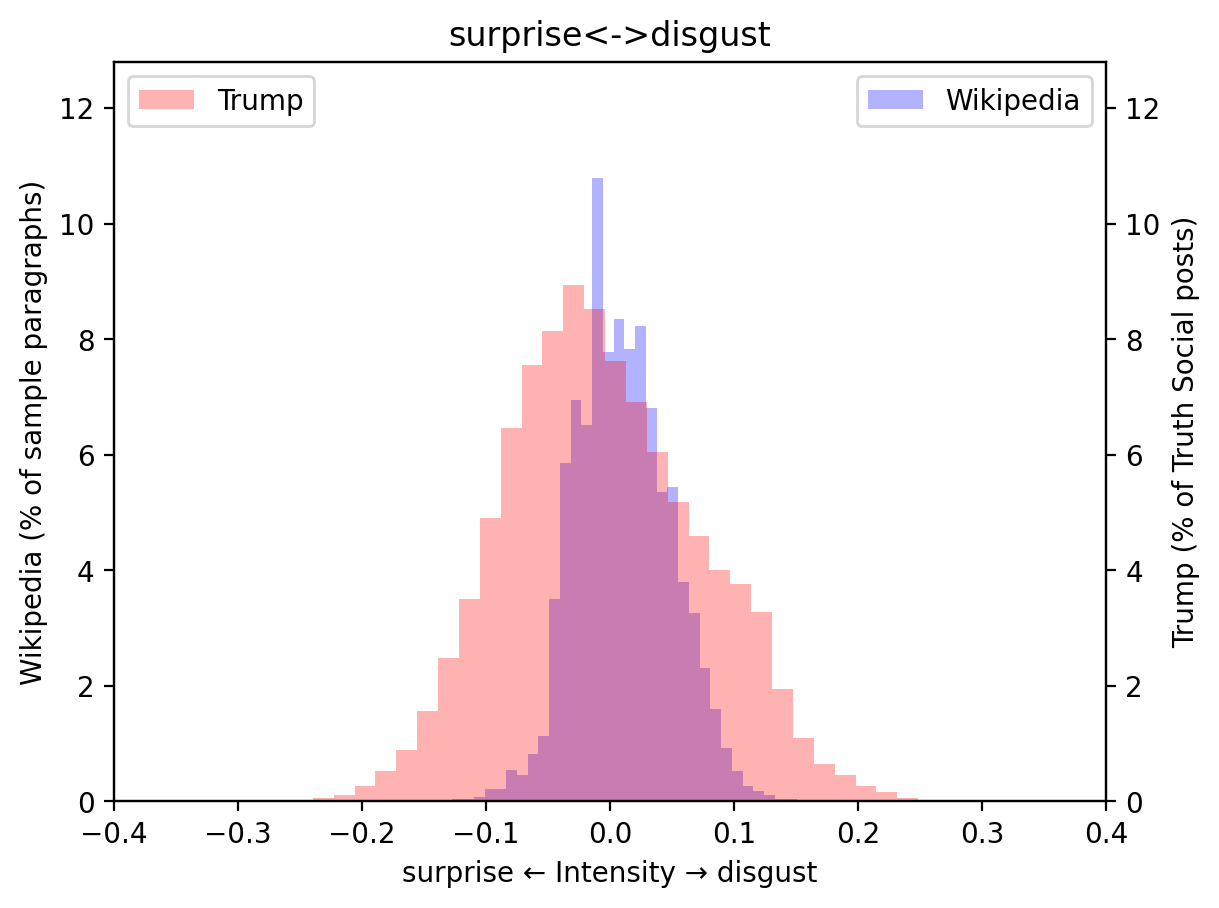
The bump in the disgust side is interesting. It implies that Trump tends to dish out an extra helping of disgust whenever he goes that direction.
Can an AI really understand emotion?
Short answer: Yes, if it’s in text.
Large language models (LLMs) are extremely good at picking up on language artifacts like word choice or formal vs informal tone. In fact, they’re trained expicitly to find subtle nuances.
People are similar, to some extent. Some are better than others at identifying emotion from pure text. Others are better at picking up on body language or tone of voice. Still others are sensitive to highly contextual clues, like inside jokes or reading the subtext.
Most people can become better through practice and being exposed to it more. That’s what these AI models are doing during training, they’re being exposed to a gargantuan number of situations and learn to see patterns that might not be apparent to others. That’s what all machine learning is: pattern matching. Learning patterns from lots of examples.
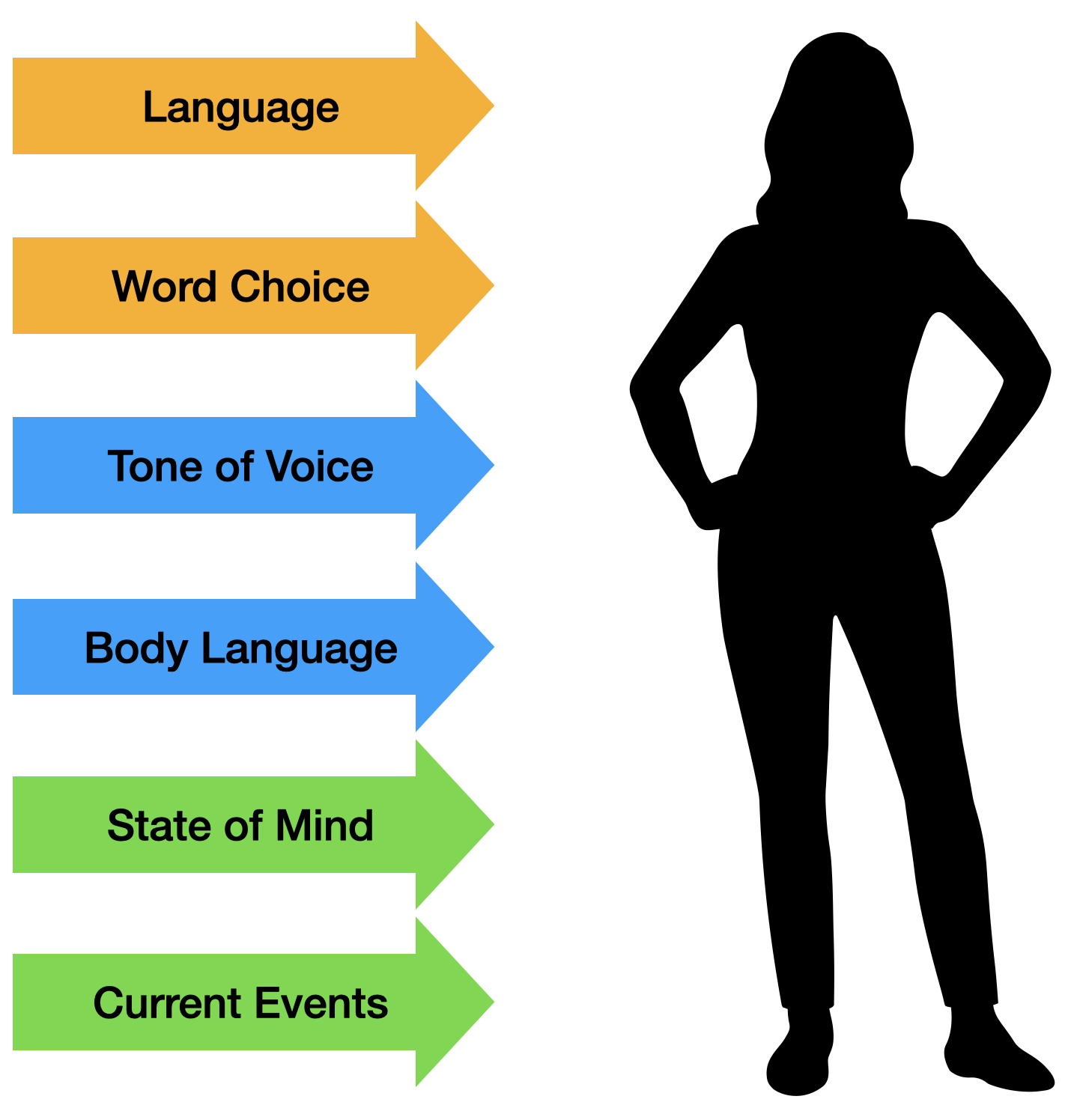
But that’s just language. When two people talk, there’s a whole lot going on:
- Language, word choice, etc.
- Body language and intonation
- Context, like the listener’s state of mind, or current events (e.g. subtext, inside jokes, etc.)
Aphasia
Oliver Sacks, a neurologist, wrote a chapter called The President’s Speech in his book. It’s fascinating; if you have time for a 5-page read, do it.
He talks about patients who have a condition called aphasia, where they truly cannot understand language. Receptive aphasiacs can speak but don’t understand words spoken to them. Yet they responded dramatically with laughter and yelling to a speech by the then president of the United States. They apparently understood what was going on, yet they definitely (clinically) did not understand the words.
Body language, intonation, context, current events…
Many of the aphasia patients’ friends and family insisted that they couldn’t have aphasia because they seem to follow conversations just fine. Oddly, a lot of the conversations we have, day-to-day, don’t involve facts that can’t be derived from the context. Language is only a part of what’s communicated.
LLMs are the reverse. They understand only the words, not everything else.
What did we measure?
The emotion in the text alone.
Or, more precisely, the words intended to trigger emotion in the text. Words don’t contain emotion, they’re just signals intended to trigger emotion in other people.
Trump in particular is good at creating key phrases and attaching emotion to them. Phrases like “Let’s go Brandon” sound like Joy but registers as Disgust to people who know what it means.
A Tour of 2022
Let’s look at all of his posts throughout the year of 2022, individual posts instead of rolled up into a histogram.
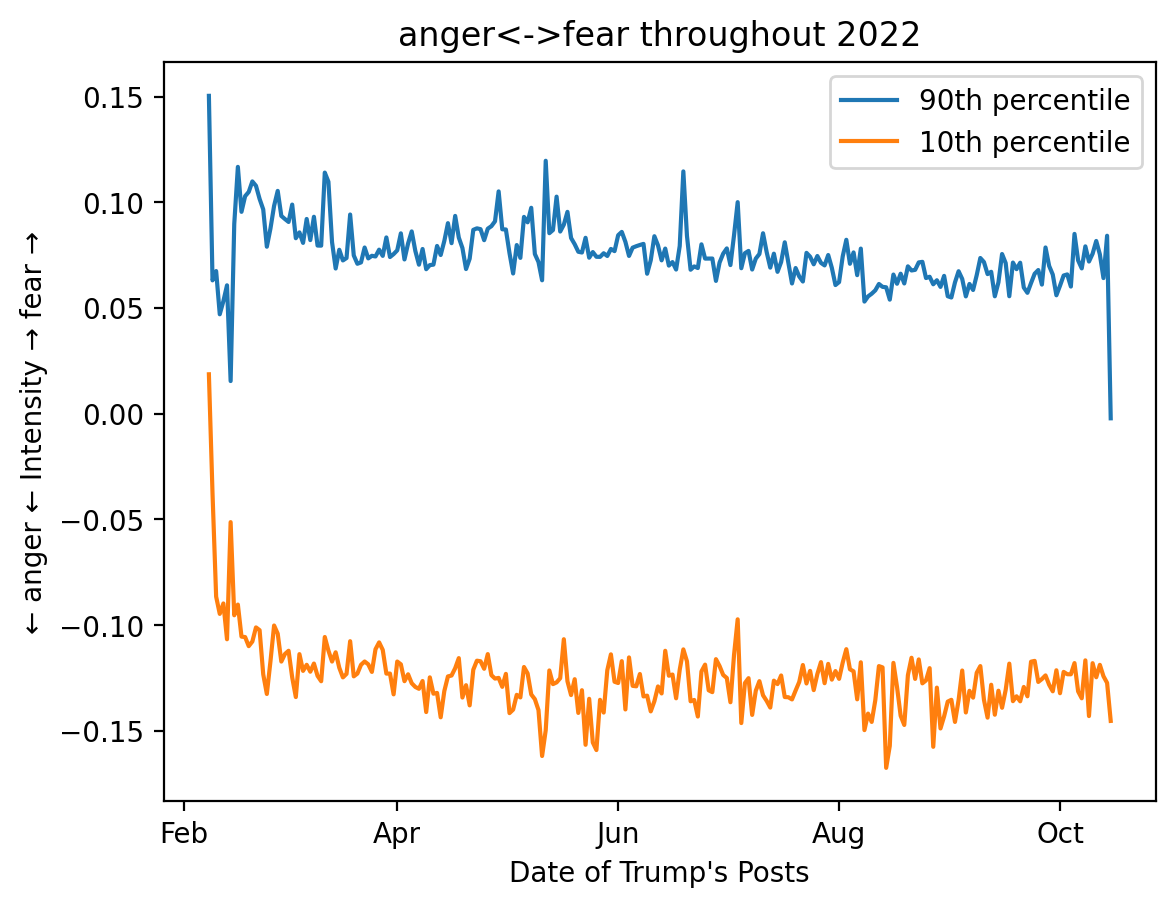
Note: 90th & 10th percentile show the posts that are more extreme, but not the most.
I see a general downward trend for use of fear. On the other hand, initially there was a sharp increase (to the negative side) in anger, but then it settled in at a rough baseline throughout the remainder of the year
Those first few posts seem to slant hard away from anger and toward fear. Here’s what the first one says:
We have until SEPT 3rd until federal protections lift and the 2020 election can be DELETED FOREVER. Cast vote records PROVE fraud by machines. We need your help, SHARE THIS EVERYWHERE! https://frankspeech.com/article/save-your-county
What about ALL CAPS TEXT? DOES AI UNDERSTAND IT DIFFERENTLY? Yep. “Caps”, “caps” and “CAPS” are three totally different words to an LLM. During training, the LLM figures out that they’re just variations of each other, but with different emotional intensity attached. cRaZy.
What are the Numbers?
In short, the numbers are label-less quantities. Don’t pay too much attention to the exact number. Focus on the general trends.
-0.15is angry0.15is fearful-0.15is more angry than-0.10.15is more fearful than0.1
They follow the principles of ordering, bigger numbers are more intense.
It’s extracted from AI embeddings. Each model uses this “secret language” that it uses to think about concepts and how they interact. With emopoint, I found a way to extract specific concepts that are normally difficult to measure and display them in graphable quantities.
Each model learns it’s own representation. And yes, using bigger and more capable models seems to result in more “emotional information” being captured, at least in my experiments.
What next?
Voice! I experimented with CLAP, a multi-modal model that understands both audio & text. The hope was that I could also incorporate vocal intonation and other aspects of a live speaker. My hypothosis is that we’ll be able to capture even more emotion from Trump. Unfortunately, it got a bit complicated, so I bailed on it for this post. I’d like to follow up.
Debates! Yes, the presidentail debates are this week, Trump v. Biden. I want to do an analysis between the two speakers. I’m particularly interested in what topics evoke the most emotion, textually.
Use Cases
A lot of people hear “Generative AI” and think no further than generating text or pictures. But AI needs to build a lot of skills in order to do that effectively. A lot of good GenAI use cases are in merely understanding and processing information in new ways.
Even with it’s shortcomings, there’s a lot of potential for emopoint to do more objective analysis at scale:
- Call centers — what does a good call flow look like? Which operator has nerves of steel when dealing with angsty customers? Who needs coaching?
- Coaching — how do the best coaches react in specific circumstances? (Let’s do that more)
- Marketing — did people start talking nasty about us?
- Social media — Gain X-Ray vision into the tweet storm about your company. Respond to the biggest risks.
On that last note, I made fossil as a social media client that reads your feed for you, and presents
it in a way where you can get exactly the content you’re looking for, ignoring all the rest. I want to add
emopoint to address the obvious flaw: to get content related to X, just not the negative stuff. Block all
the fear-evoking content and just see what I want (or, maybe focus on fear, if that’s your thing).
I did this for emotions, but you can do this for anything with oposites. The process is useful for when you have an intuitive notion, but where computers have traditionally failed. I’ve wanted to build a sarcasm detector, a program that can identify if the speaker might be sarcastic, although, this would be a lot more complex than just text analysis.
Be sure to checkout emopoint on github or read the technical details of how it works.
So…is he?
Is he emotional? Maybe, what do you think? Look at the data for yourself. Do you have something more interesting? Let me know, I’d love to hear about it.